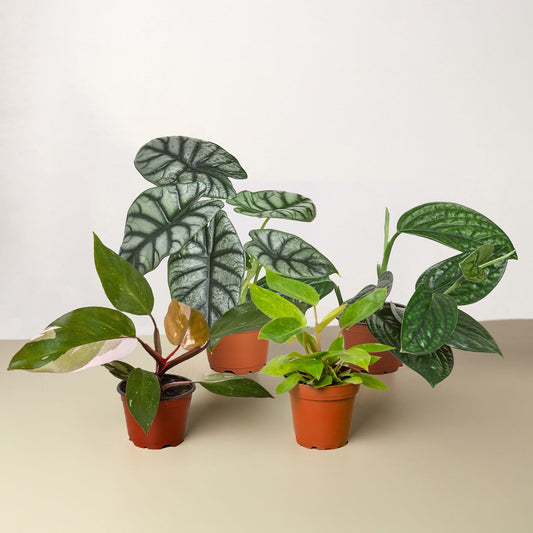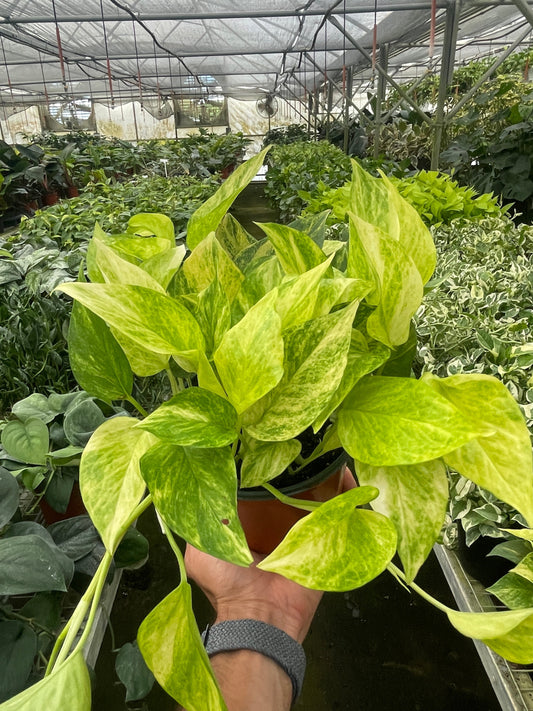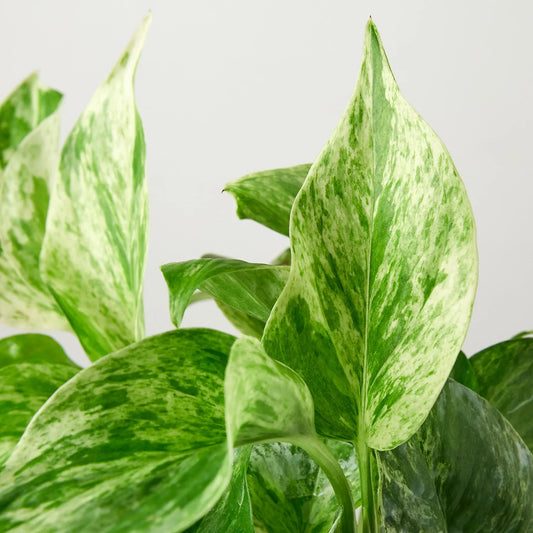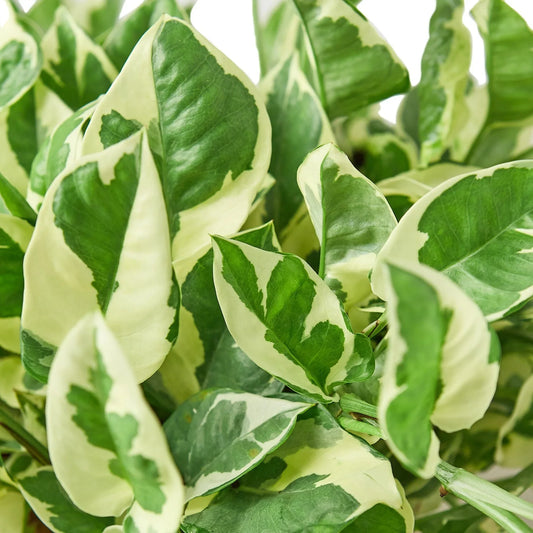This Is Exactly How Often To Water Your Kalanchoe
Cafe Planta Team
Watering your Kalanchoe isn't just about keeping it alive; it's about helping it thrive. This charming succulent, with its vibrant blooms and fleshy leaves, is a favorite among plant parents for its resilience and beauty. But, like all plants, it has its quirks, particularly when it comes to watering. Get it right, and your Kalanchoe will reward you with a stunning display of color and life.
In this article, we’ll explore everything you need to know about watering your Kalanchoe. From understanding its natural habitat to recognizing the signs of overwatering and underwatering, you’ll gain the confidence to care for your plant with ease. Let's dive into the art of watering your Kalanchoe and ensure it remains a lively addition to your home.
Understanding Kalanchoe's Natural Habitat
Before jumping into the nitty-gritty of watering schedules and techniques, it's essential to understand where Kalanchoe naturally thrives. These succulents hail from Madagascar, where they bask in warm temperatures and receive sporadic rainfall. This environment has shaped their care requirements, particularly their preference for well-drained soil and infrequent watering.
In its native habitat, Kalanchoe experiences a dry season followed by a brief rainy period. The plant has adapted to store water in its leaves, allowing it to survive through droughts. This adaptation is why Kalanchoe plants prefer less frequent watering compared to your average houseplant. If you mimic this natural cycle, your Kalanchoe will feel right at home.
So, how does this translate to your living room? Here’s a simple analogy: think of Kalanchoe as someone who enjoys sipping a drink slowly rather than gulping it down. Overwatering is like offering them another drink when they’re still halfway through the first one. Understanding this concept will help frame the rest of your care approach.
How Often Should You Water Your Kalanchoe?
The million-dollar question: how often should you water your Kalanchoe? While there’s no one-size-fits-all answer, a good rule of thumb is to water your Kalanchoe every 2-3 weeks. However, this frequency can vary based on several factors like the season, humidity, and the specific conditions of your home.
During the growing season, which spans spring and summer, your Kalanchoe may require water more often, roughly every two weeks. In contrast, during the dormant period in fall and winter, you can extend this interval to about three weeks or even longer. Always remember, it’s better to err on the side of underwatering than overwatering.
- Spring and Summer: Water every 2 weeks.
- Fall and Winter: Water every 3-4 weeks.
This schedule serves as a guideline, but it’s crucial to observe your plant and adjust accordingly. Feel the soil—if the top inch is dry, it's time to water. And if you're unsure, wait a few more days. Patience is your best friend when it comes to succulents.
Signs of Overwatering and Underwatering
Recognizing the signs of overwatering and underwatering is crucial for maintaining a healthy Kalanchoe. Let’s start with overwatering, the more common culprit. If your Kalanchoe’s leaves appear mushy or start falling off, it’s likely a victim of too much water. You might also notice a yellow hue creeping in, a telltale sign of root rot.
Underwatering, on the other hand, manifests through shriveled leaves and stunted growth. The leaves may become brittle, and the plant can look generally unhealthy. While this isn’t as immediately harmful as overwatering, it’s still a sign that your Kalanchoe needs a little more love—or water, in this case.
Interestingly enough, both problems can cause leaf drop, which can be confusing. Therefore, it's essential to look at the overall health and other signs your plant is exhibiting to diagnose the issue correctly. Use these signs as clues to adjust your watering habits and keep your Kalanchoe in peak condition.
The Right Way to Water Your Kalanchoe
Watering Kalanchoe might sound straightforward, but there’s a bit of technique involved. The goal is to water the plant thoroughly, ensuring that the water reaches the roots without leaving the soil soggy. Here’s how to do it:
- Check the Soil: Before watering, check if the top inch of soil is dry. If it’s still moist, wait a few more days.
- Use Room Temperature Water: Sudden temperature changes can shock your plant, so always use room temperature water.
- Water Thoroughly: Pour water evenly over the soil, allowing it to seep down to the roots. Stop once water drains from the bottom of the pot.
- Drain Excess Water: Make sure your pot has drainage holes and empty any excess water from the saucer to prevent root rot.
By following these steps, you’ll ensure that your Kalanchoe receives the right amount of water without risking overwatering. Remember, it’s not about how much water you give, but how you give it.
Choosing the Right Pot and Soil
The pot and soil you choose play a significant role in your Kalanchoe’s watering needs. A pot with drainage holes is non-negotiable, as it allows excess water to escape, preventing waterlogged soil. Terra cotta pots are particularly popular for succulents because they’re porous, allowing soil to dry out more quickly than plastic or ceramic pots.
As for soil, opt for a well-draining mix. You can find commercial cactus or succulent potting mixes that are perfect for Kalanchoe. These mixes often contain sand or perlite, which helps improve drainage. If you’re feeling adventurous, you can mix your own by blending regular potting soil with sand or perlite at a 2:1 ratio.
Using the right pot and soil makes it easier to maintain the ideal watering conditions. It’s like giving your Kalanchoe a comfy home that suits its lifestyle. The combination of the right pot and soil can make a dramatic difference in the health and happiness of your plant.
Seasonal Watering Adjustments
Your Kalanchoe’s watering needs aren’t static—they change with the seasons. During the spring and summer, your plant is actively growing and may require slightly more water. In contrast, fall and winter mark a period of dormancy, when your Kalanchoe needs less frequent watering.
In the warmer months, monitor the soil more closely and be prepared to water every two weeks or so. As temperatures drop, you can extend this period, sometimes watering as infrequently as once a month. This seasonal adjustment aligns with how Kalanchoe would naturally experience rainfall and dry spells in its native habitat.
One way to remember these changes is to think of your Kalanchoe as having a “summer mode” and a “winter mode.” In summer mode, it’s soaking up the sun and growing, so it needs more hydration. In winter mode, it’s taking a break, conserving its energy, and requiring less water.
Environmental Factors to Consider
The micro-environment of your home can also affect how often you should water your Kalanchoe. Factors like humidity, temperature, and air circulation all play a part. For instance, if your home is particularly dry, your plant might need water more frequently.
Conversely, if you live in a humid climate, the soil will retain moisture longer, potentially extending the time between waterings. Temperature also matters—a warmer room will cause soil to dry out faster. Keep these factors in mind as you develop a watering routine.
It's like baking a cake—adjust the cooking time based on your oven’s quirks. Similarly, tailor your care routine to suit your home’s conditions. This personalized approach helps ensure that your Kalanchoe is happy and healthy year-round.
Troubleshooting Common Watering Issues
Even with the best intentions, watering mistakes happen. If you suspect overwatering, first let the soil dry out completely. If your Kalanchoe shows significant signs of root rot, consider repotting it in fresh, dry soil. Trim away any mushy, rotten roots before replanting.
If underwatering is the problem, gradually increase the frequency of watering. Don’t shock your plant by suddenly over-watering. Instead, water it thoroughly and monitor the soil closely until it recovers.
- For Overwatering: Let soil dry out, remove rotten roots, and repot if necessary.
- For Underwatering: Water thoroughly and adjust frequency gradually.
Being able to spot these issues early on can save your plant from long-term damage. Consider keeping a watering journal to track when and how much you water, which can help you identify patterns and make necessary adjustments.
Additional Tips for Kalanchoe Care
Beyond watering, there are a few more tricks to keeping your Kalanchoe in tip-top shape. First, ensure it gets plenty of indirect sunlight. A bright window is ideal, but avoid direct sun exposure, which can scorch the leaves.
Fertilize your Kalanchoe during the growing season with a balanced, water-soluble fertilizer every month or so. This will give your plant the nutrients it needs to produce those beautiful blooms. In the dormant season, hold off on fertilizing to let your plant rest.
Pruning is another important aspect of care. Remove spent blooms and any dead or damaged leaves to promote new growth. Not only does this keep your plant looking tidy, but it also encourages more vibrant flowering.
With these additional care tips, your Kalanchoe will not only survive but thrive, providing you with a lush, cheerful addition to your home.
Final Thoughts
Watering your Kalanchoe might seem like a challenge at first, but with a little practice, it becomes second nature. By understanding its natural habitat, recognizing signs of watering issues, and adjusting to your home's environment, you'll keep your plant happy and healthy.
At Cafe Planta, we’re passionate about helping you succeed with your plant journey. Whether you're looking for a new plant friend or need advice, we're here for you. Feel free to email us or reach out on Instagram. Let's cultivate our love for plants together and create beautiful, thriving spaces.



















